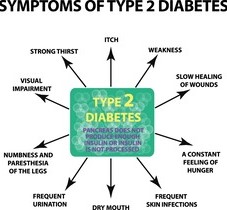
Understanding the Different Types of Diabetes: A Comprehensive Overview
Diabetes is a chronic metabolic disorder that affects millions of people worldwide. It is characterized by high blood sugar levels due to the body's inability to properly utilize or produce insulin, a hormone responsible for regulating blood sugar. While diabetes might be a common term, it's important to recognize that there are different types of diabetes, each with its own distinct characteristics, causes, and management strategies. In this article, we'll delve into the various types of diabetes and shed light on their unique features.
1. Type 1 Diabetes:Type 1 diabetes, often referred to as juvenile diabetes, typically manifests in childhood or early adulthood. This autoimmune condition occurs when the body's immune system mistakenly attacks and destroys the insulin-producing cells in the pancreas, leading to a lack of insulin. Individuals with type 1 diabetes require lifelong insulin therapy to regulate their blood sugar levels. Common symptoms include excessive thirst, frequent urination, weight loss, and fatigue.
2. Type 2 Diabetes:Type 2 diabetes is the most prevalent form and usually develops in adulthood, although it's increasingly being diagnosed in younger individuals due to lifestyle factors. This type is characterized by insulin resistance, where the body's cells become resistant to the effects of insulin. This results in higher blood sugar levels. Risk factors for type 2 diabetes include obesity, physical inactivity, genetics, and poor dietary habits. Early detection and management through lifestyle changes, medication, and sometimes insulin are crucial in controlling type 2 diabetes.
3. Gestational Diabetes:Gestational diabetes occurs during pregnancy when hormonal changes can lead to insulin resistance. This condition usually resolves after childbirth, but women who've had gestational diabetes are at a higher risk of developing type 2 diabetes later in life. Proper prenatal care, monitoring blood sugar levels, and lifestyle adjustments are essential in managing gestational diabetes and ensuring a healthy pregnancy.
4. LADA (Latent Autoimmune Diabetes in Adults):LADA, also known as type 1.5 diabetes, shares characteristics of both type 1 and type 2 diabetes. It typically occurs in adulthood and progresses more slowly than type 1 diabetes. Individuals with LADA initially appear to have type 2 diabetes but eventually require insulin therapy due to the gradual loss of insulin-producing cells.
5. MODY (Maturity-Onset Diabetes of the Young):MODY is a rare form of diabetes caused by genetic mutations that affect the way insulin is produced and secreted. It often runs in families and can present at a young age. MODY is often misdiagnosed as type 1 or type 2 diabetes, but its genetic basis makes proper diagnosis crucial for effective management.
6. Secondary Diabetes:Secondary diabetes is caused by other medical conditions or medications that affect insulin production or utilization. Conditions such as Cushing's syndrome, pancreatic diseases, and certain medications can lead to secondary diabetes. Treating the underlying cause can sometimes resolve secondary diabetes.
In conclusion, diabetes is not a one-size-fits-all condition. Recognizing the differences between the various types of diabetes is vital for proper diagnosis, treatment, and management. Whether it's the autoimmune nature of type 1 diabetes, the insulin resistance of type 2 diabetes, or the pregnancy-related gestational diabetes, understanding these distinctions can empower individuals and healthcare professionals to make informed decisions for effective diabetes management. If you suspect you or someone you know may have diabetes, seeking medical advice and early intervention can significantly improve overall health and quality of life.



